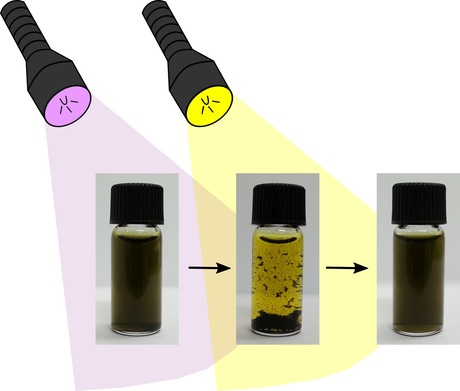Soap, light and clean water

Contaminated water sources are a rapidly escalating global problem, but the latest research from Monash University may have found a unique and cost-effective solution using light, soap and graphene.
Graphene is a two-dimensional honeycomb lattice of carbon that is just one atom thick. First recognised in the 19th century, it is only in recent decades that large-scale graphene production has become practicable. It has now found its place in a wide variety of industrial applications, such as composites, batteries and semiconductors.
Dr Rico Tabor of Monash University has been exploring the unique structure and properties of graphene, which is believed to have a potentially huge range of diverse technological opportunities. He said: “Among its many potential uses, the prospect of using graphenes for the purpose of water purification is extremely promising. Because the structure is essentially two-dimensional and only an atom thick, graphene ‘sheets’ have the highest surface area possible, meaning their capacity to mop up contaminants in water surpass that of any currently used materials or membranes.”
The theoretical specific surface area of graphene is 2630 m2/g — substantially larger than carbon black at around 900 m2/g — and its unique 2D structure means it is the only form of carbon where every atom is exposed on two surfaces. It is also self-repairing when exposed to external sources of carbon atoms.
While it has been known that graphene can be used to extract contaminants from water, traditional approaches have been costly due to the use of expensive polymers or the large amounts of energy required for centrifugation.
The Monash team found that the addition of a small amount of light-sensitive soap to contaminated water may be the answer. The soap reacts to different coloured lights, changing its molecular structure and the way it interacts with carbon materials. By shining a particular colour light on the contaminated water the graphene separates out, taking the contaminants with it. Once the contaminants are removed, a different coloured light causes the graphene to redisperse for future use.
As co-researcher Thomas McCoy said: “Light is appealing as it is abundantly available, simple and low cost when compared to most separation methods.” McCoy believes that this research could have “significant implications for cost-effective, large-scale water treatment”.
The Monash University research was published in Nanoscale, the journal of the Royal Society of Chemistry.
Centrifuge puts a positive spin on R&D lab's workflow
The OHAUS Frontier 5000 Multi-Pro 5816 centrifuge was a real game changer for the liquids...
Compressed air in the pharmaceutical industry: part 2
Kaeser Compressors describes the key points to observe in the process of renovating an existing...
Wearable sensor can detect solid-state skin biomarkers
The wearable, stretchable, hydrogel-based sensor offers a non-invasive method to monitor health...




